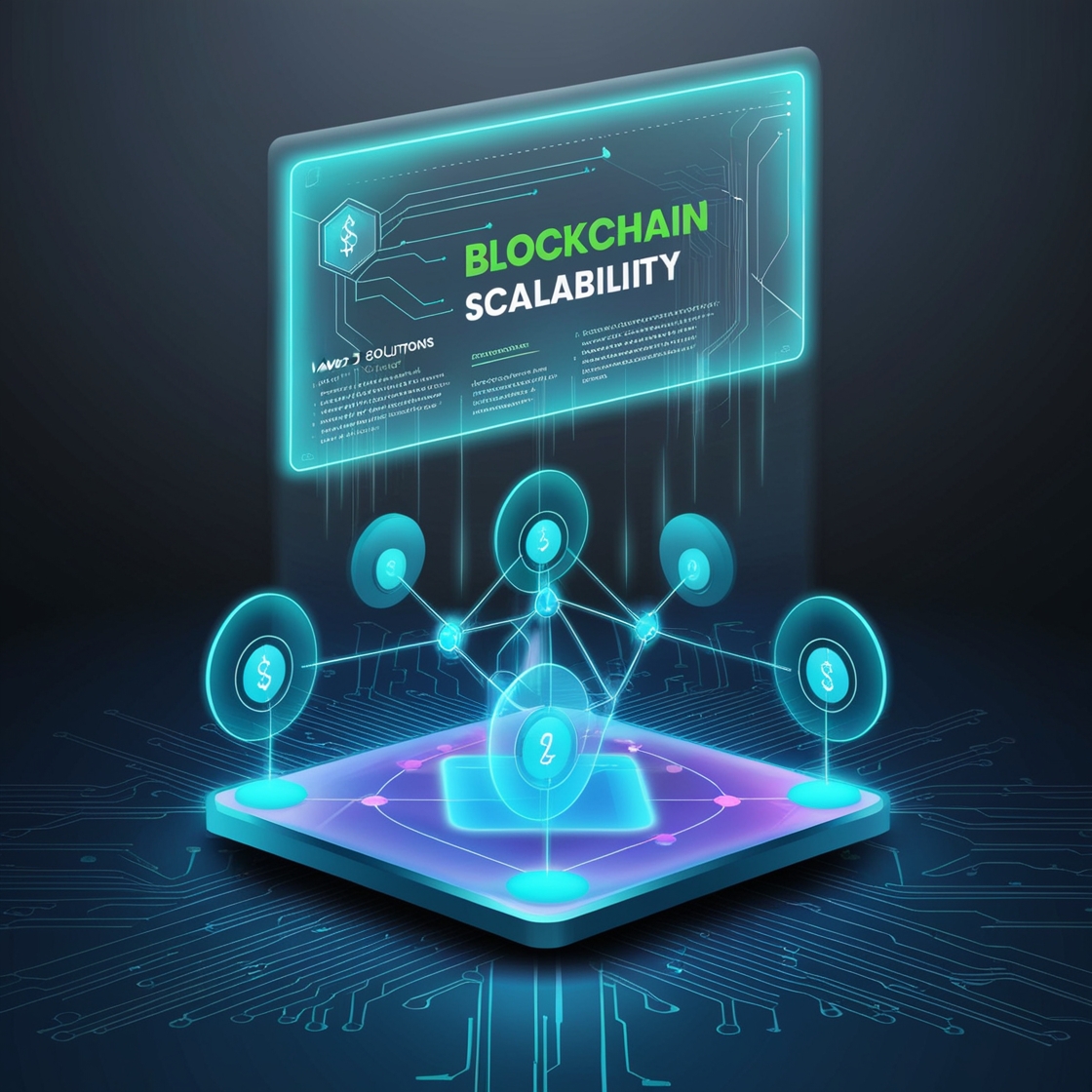Introduction
Blockchain technology has revolutionized various industries by providing a decentralized and secure way to store and transfer data. However, one of the most significant challenges facing blockchain networks today is scalability. As the demand for blockchain applications continues to grow, the need for faster, more efficient transaction processing has become a priority. Enter Layer 2 solutions—innovative technologies designed to enhance the scalability of existing blockchains without compromising security or decentralization. In this article, we’ll dive into what Layer 2 solutions are, how they work, and why they’re crucial for the future of blockchain.
Understanding Blockchain Scalability
Scalability refers to the ability of a blockchain network to handle an increasing number of transactions without sacrificing performance. Most Layer 1 blockchains like Bitcoin and Ethereum face scalability challenges due to their design, which prioritizes decentralization and security over transaction speed. This results in slower processing times and higher transaction fees, especially during periods of high network congestion.
The Scalability Trilemma
The scalability trilemma is a concept introduced by Ethereum’s co-founder Vitalik Buterin, which highlights the difficulty of achieving decentralization, security, and scalability simultaneously. Most blockchains can excel in two of these areas but often at the expense of the third. Layer 2 solutions aim to resolve this trilemma by offloading some of the transaction processing to external networks, thereby freeing up space on the main blockchain.
What Are Layer 2 Solutions?
Layer 2 solutions are secondary frameworks or protocols built on top of an existing blockchain (Layer 1) to improve its scalability and efficiency. Unlike Layer 1 upgrades that require changes to the base protocol, Layer 2 solutions operate independently, allowing for faster transactions and reduced costs without compromising the underlying blockchain’s security.
How Layer 2 Solutions Work
Layer 2 solutions work by handling transactions off-chain, meaning they do not directly interact with the main blockchain for every transaction. Instead, they bundle multiple transactions together and only record the final result on the Layer 1 blockchain. This reduces the load on the main network and significantly increases transaction throughput.
Key Layer 2 Solutions in the Market
Several Layer 2 solutions have gained popularity for their ability to scale blockchain networks efficiently. Let’s explore some of the most promising ones:
Optimistic Rollups
Optimistic Rollups are a type of Layer 2 solution that processes transactions off-chain and then posts the data back to the main Ethereum network. They are called “optimistic” because they assume transactions are valid by default and only verify them if challenged.
- Benefits: Increased transaction speed, lower fees, and compatibility with Ethereum smart contracts.
- Examples: Projects like Arbitrum and Optimism have successfully implemented Optimistic Rollups to scale Ethereum.
ZK-Rollups (Zero-Knowledge Rollups)
ZK-Rollups use Zero-Knowledge Proofs to verify transactions without revealing the underlying data. This makes them more secure and efficient compared to other Layer 2 solutions.
- Advantages: Enhanced privacy, reduced transaction size, and faster confirmation times.
- Examples: Platforms like zkSync and StarkNet are leading the way in using ZK-Rollups for scalable dApps.
Plasma
Plasma is a framework that uses child chains to offload transactions from the main Ethereum network. These child chains can handle thousands of transactions per second, making them ideal for high-throughput applications.
- Use Cases: Plasma chains are used in decentralized exchanges and gaming platforms where scalability is crucial.
State Channels
State channels allow two parties to conduct multiple transactions off-chain, only settling the final state on the blockchain. This is particularly useful for micro-transactions and gaming, where instant confirmations are needed.
- Example: The Lightning Network on Bitcoin is a popular implementation of state channels for instant payments.
Benefits of Layer 2 Solutions
Layer 2 solutions offer several benefits that make them essential for the future of blockchain technology:
- Increased Transaction Speed: By processing transactions off-chain, Layer 2 solutions significantly reduce the time required for confirmation.
- Lower Transaction Fees: Offloading transactions reduces congestion on the main blockchain, resulting in lower fees.
- Scalability for dApps: Layer 2 solutions enable decentralized applications (dApps) to handle more users and transactions, driving mass adoption.
The Future of Blockchain Scalability
The future of blockchain scalability looks promising, with ongoing research and development in Layer 2 technologies. As Ethereum moves towards its Ethereum 2.0 upgrade, Layer 2 solutions will play a crucial role in supporting the network’s transition to Proof-of-Stake (PoS) and beyond.
Layer 2 and Decentralized Finance (DeFi)
The DeFi sector is one of the biggest beneficiaries of Layer 2 solutions. With reduced fees and faster transaction times, DeFi platforms can provide a better user experience, leading to greater adoption.
Conclusion
Layer 2 solutions are the key to unlocking the full potential of blockchain technology. By addressing scalability issues, they enable faster, cheaper, and more efficient transactions, paving the way for broader adoption of blockchain across various industries. As we look to the future, Layer 2 technologies will continue to evolve, offering innovative solutions to meet the growing demands of the digital economy.
FAQs
- What is the difference between Layer 1 and Layer 2 blockchains?
Layer 1 is the base blockchain (e.g., Ethereum), while Layer 2 is a secondary protocol built on top to enhance scalability. - Can Layer 2 solutions solve Ethereum’s gas fee problem?
Yes, by reducing congestion on the main network, Layer 2 solutions can significantly lower gas fees. - Are Layer 2 solutions secure for financial transactions?
Yes, they maintain security by leveraging the security features of the underlying Layer 1 blockchain. - How do I choose the right Layer 2 solution for my project?
Consider factors like transaction speed, cost, security, and compatibility with your existing infrastructure. - What is the future of Layer 2 technology?
The future looks bright, with ongoing developments in interoperability, privacy, and scalability, making Layer 2 a critical component of the blockchain ecosystem.
